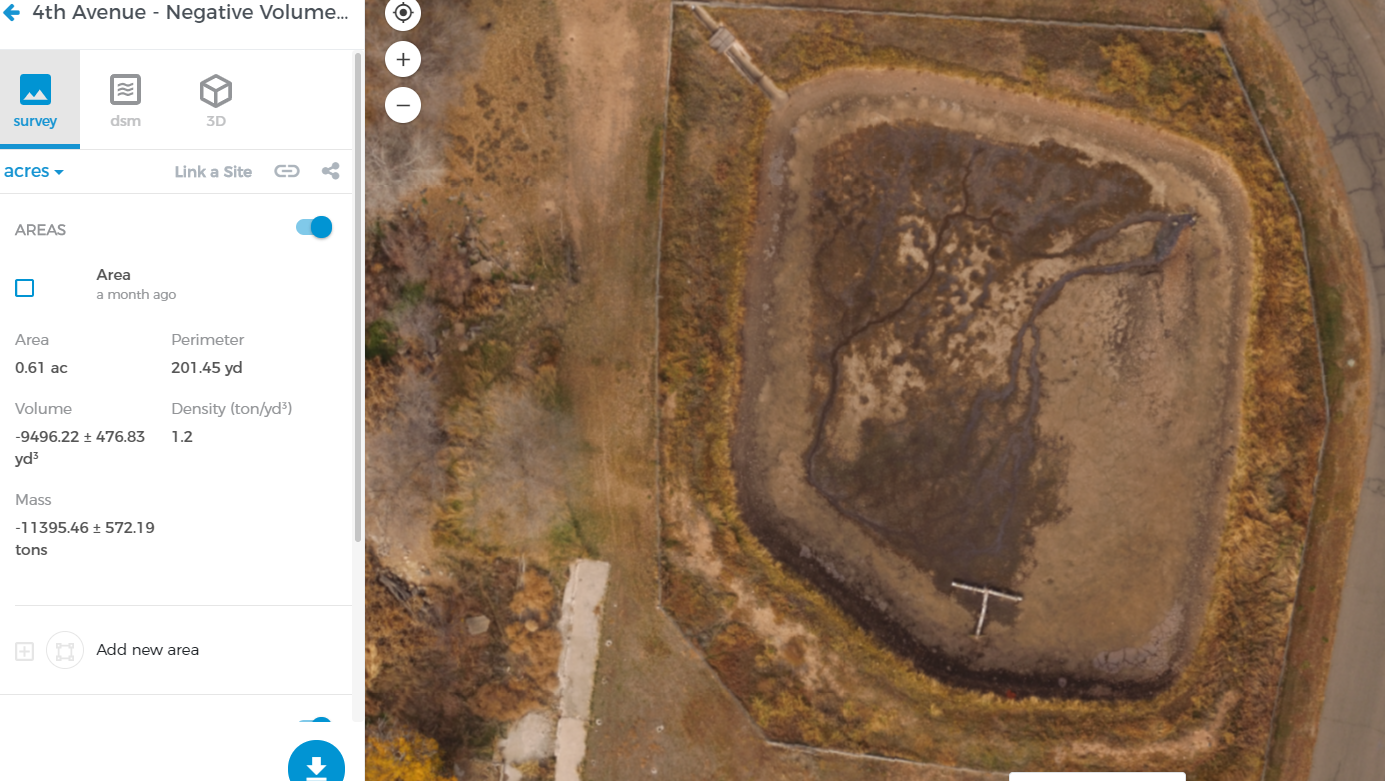When to Use the Different Volume Calculation Types in InSites
Measuring a stockpile on a concrete pad is relatively simple, and Botlink offers a formula for that, but what if the surface is not consistent? Well, InSites offers multiple different calculation types to ensure that you stockpile measurements will be as accurate as possible. In this article we’re going to go through the different calculations, and give you the information needed to be as successful as possible.
NOTE - Placing the points when defining the stockpile is important. Take your time, and be as accurate as possible, as this will lead to accurate volume measurements.
Regional-Low-Point Calculation:
Regional-Low-Point Volume is calculated from the lowest point of the region enclosed by the polygon. Basically, whatever the lowest elevation is in the area within the polygon will be assume to be the bottom of the pile. This is the ideal calculation for aggregate storage in a bay system where the pile is surrounding by three container walls, but the bottom base level is visible.
Fit-Plane Calculation:
Fit-Plane Volume is calculated using the height of the points of the polygon and finding the plane-of-best-fit for the area. This calculation takes all of the points of the polygon into account, and determines the best base/plane. This is the most commonly used calculation type, and is ideal for aggregate stored on a dirt surface that isn’t 100% level.
Polygon-Low-Point Calculation:
Polygon-Low-Point Volume is calculated from the lowest point of the points that define the polygon. This is similar to Regional-Low-Point calculation, but instead of taking into account the entire drawn area, the calculation looks for whatever the lowest defining point, and uses that as the base level for the entire pile. Similar uses cases to the Regional-Low-Point calculation, with the added ability to pinpoint the exact elevation needed for an accurate calculation.
Polygon-High-Point Calculation:
Polygon-High-Point Volume is calculated from the highest point of the points that define the polygon. This calculation type is idea for finding fill numbers. The image above shows a large area that needs to be filled, and by drawing our area on the surface in which it needs to be filled to, and using the Polygon-High-Point calculation, we can get the amount of material that’s needed for the project.
Polygon-Mean-Point Calculation:
Polygon-Mean-Point Volume is calculated from the mean point of the points that define the polygon. This calculation is taking the elevation of all the polygon points, averaging them, and using the average elevation for a consistent base level for the stockpile.
Triangulated Volume Calculation:
Triangulated Volume is calculated by splitting the polygon into triangles and finding the fit plane volume of each triangle and then summed together. Triangulate volumes calculations are very accurate for large piles. Basically, the system uses the points that define the area, cuts them into triangles, find the average elevation for the each triangle, and creates a base-plane with those segments. This is a great calculation type for uneven surfaces where simply finding an average would lead to inaccurate measurements.


